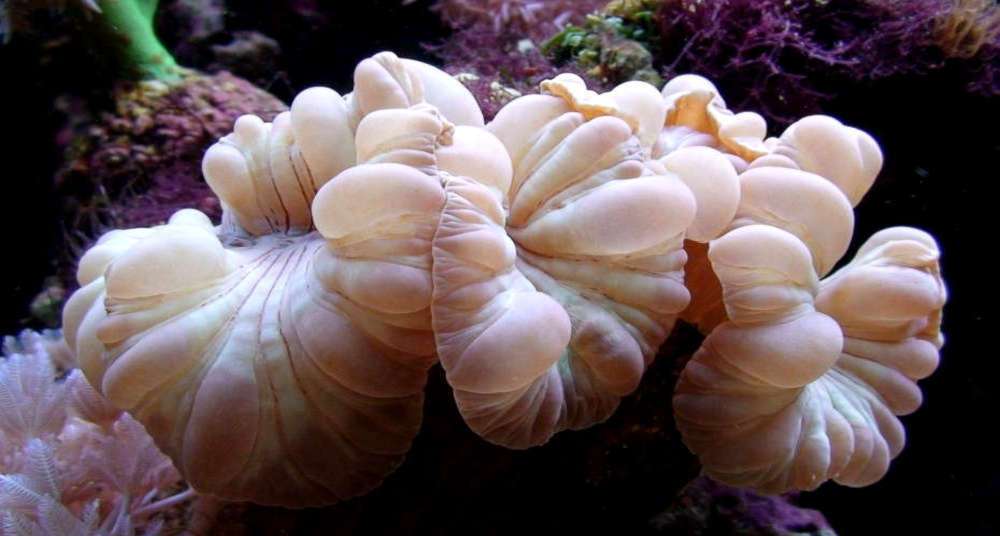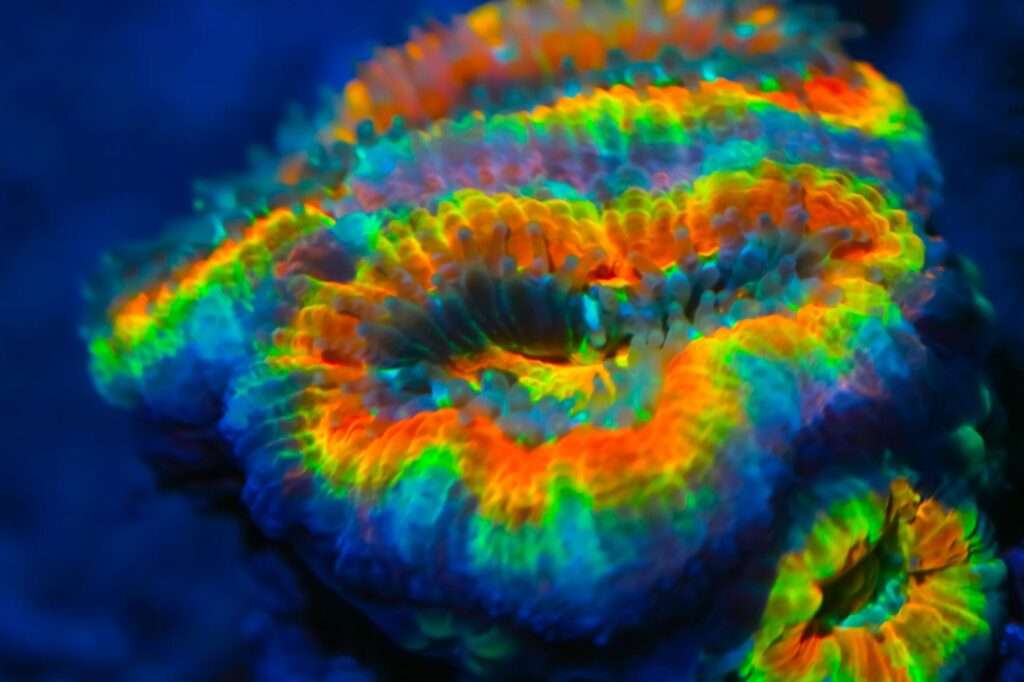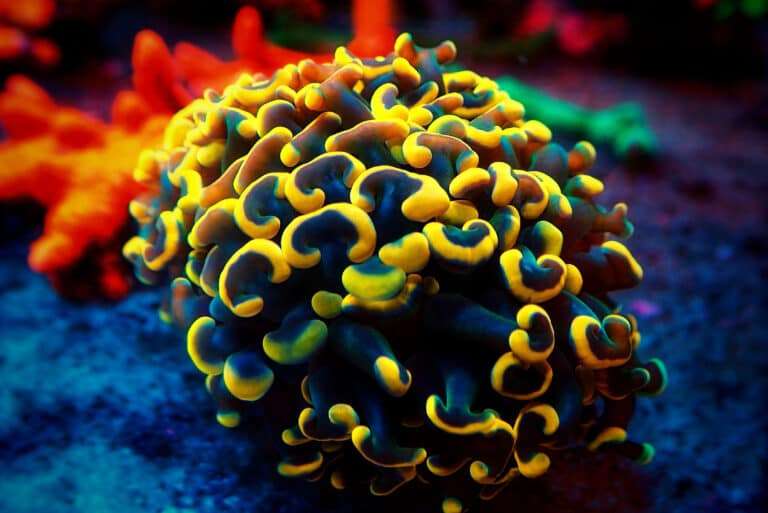
The Nemenzophyllia genus contains only one species, the striking coral Nemenzophyllia turbida. It bears the name of Dr. Francisco Nemonzo, a trailblazing coral researcher from the Philippines.
Typically, the Fox Coral is pale green or brownish-pink. They are occasionally mistaken for anemones because of their enormous, striated, ruffled polyps that stretch out into flower-like patterns. The Fox Coral on the reef lives in protected areas beneath overhangs in murky waters.
Habitat
Hodgson and Ross described the Fox Coral Nemenzophyllia turbida in 1981. The Nemenzophyllia genus has only one species, N. turbida, which has been successfully bred in captivity. In the Indo-West Pacific Ocean, from the Philippines to Java and subsequently from Indonesia to Papua New Guinea, N. turbida can be found. The N. turbida inhabit environments that are no deeper than 98 feet (30 M). They are found in habitats that are protected reef areas with overhangs and murky water.
Morphology
The Fox Coral N. turbida has a wall-like, wafer-thin skeleton, making it extremely delicate and breakable. From the top, the long hollow “corrugated” bone structure resembles little rectangular boxes almost exactly. The fleshy portion of the coral cannot entirely retract in mature specimens due to the size of each “box,” which develops polyps within them. Younger and smaller polyps can almost fully retreat within the framework.
Typically, the Fox Coral is a light green to cream color. The tissue has striations that radiate from the centre out toward the ruffled borders, giving the polyps an almost floral appearance as they fold outward. Although some N. turbida colonies may grow to a height of over 3 feet (1 m), more research is needed to determine the coral’s potential size. Unknown life expectancy.
In Captivity

- Feeding
This one has evolved a number of feeding techniques. They might get part of their nutrients from a marine alga called zooxanthellae through a symbiotic interaction. Since N. turbida’s feeding tentacles have not been seen, it is assumed that they obtain the majority of their sustenance via absorbing dissolved organic materials. Microplankton or brine shrimp can be fed to the N. turbida once per week in captivity.
- Social Interactions and Compatibility
The Fox Coral is benign and non-aggressive with almost all neighboring corals. These corals are highly attractive and don’t seem to sting or be harmed by their tank mates. Even though it doesn’t appear that other corals have an impact on the N. turbida, it is sensitive to hair algae and fast water currents. They make bad tanks for small polyp stony (SPS) corals because they demand a strong water flow, which is generally moderate and soft.
Table





